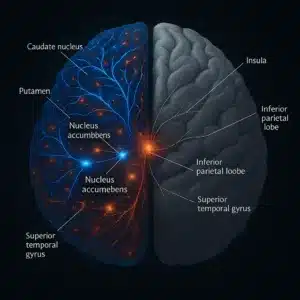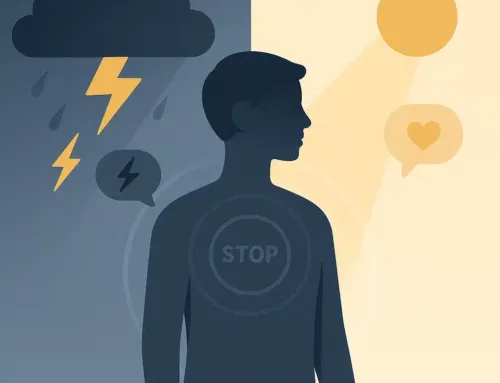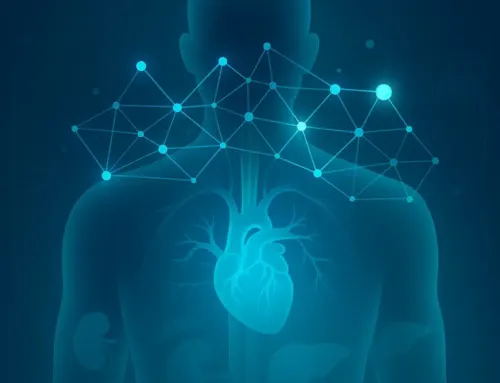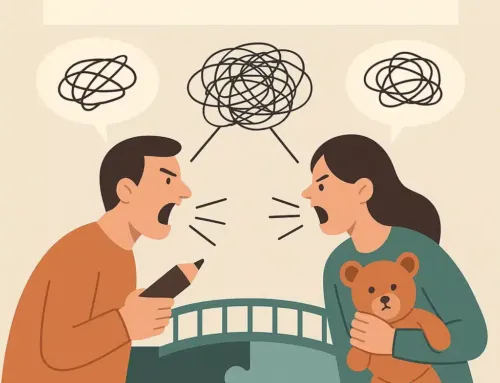
Approx. read time: 5 min.
Post: ADHD Research Unveils Brain Connectivity, Neural Pathways
🧠 A Groundbreaking Study Maps the ADHD Brain: How 8,000+ Brain Scans Just Changed Everything
🔬 A Groundbreaking Study
A revolutionary study from the National Institute of Mental Health (NIMH), spearheaded by Dr. Luke Norman, Ph.D., offers the most compelling neural evidence yet in the ongoing effort to decode Attention-Deficit/Hyperactivity Disorder (ADHD). Leveraging data from over 8,000 youths, both diagnosed and neurotypical, this large-scale investigation uses functional magnetic resonance imaging (fMRI) to reveal critical patterns in brain connectivity that correlate with ADHD symptoms.
👉 Lead Researcher: Dr. Luke Norman, Staff Scientist, NIMH Office of the Clinical Director
👉 Dataset: fMRI scans from 8,000+ individuals aged 9–13
👉 Method: Multi-site mega-analysis across six imaging datasets
👉 Published In: American Journal of Psychiatry, Jan 2024
👉 Source (NIMH.gov)
🧠 The Core Findings: ADHD Is a Connectivity Disorder
This landmark study revealed elevated connectivity between deep-brain structures and the frontal cortex in youths with ADHD. Specifically:
🔵 Subcortical Regions (Information Processing & Emotion)
-
Caudate nucleus
-
Putamen
-
Nucleus accumbens
These structures are central to reward processing, habit formation, emotional regulation, and motor control.
🔴 Frontal Cortex Regions (Cognitive Control)
-
Superior temporal gyri
-
Insula
-
Inferior parietal lobe
-
Inferior frontal gyri
These frontal regions handle impulse inhibition, attention control, and executive functions.
🔍 Key Insight: The study confirms that ADHD involves abnormal over-communication between the deep-brain emotion/motor systems and the frontal cortex areas responsible for regulation and self-control.
This directly supports previously hypothesized models of ADHD as a neurodevelopmental dysregulation of control circuits—but now backed by large-scale, empirical fMRI data.
🚧 Overcoming Past Limitations in ADHD Brain Research
Prior neuroimaging studies of ADHD suffered from:
-
Small sample sizes (typically < 100 participants)
-
Inconsistent methodologies across imaging centers
-
Limited statistical power to detect complex connectivity patterns
By contrast, this study used:
-
A harmonized, cross-site mega-analysis of six fMRI datasets
-
Advanced statistical modeling to control for motion artifacts (common in ADHD studies)
-
Over 8,000 participants, making it the largest fMRI study of ADHD to date
✅ This scale eliminates random anomalies and strengthens the reproducibility of the findings.
📘 Reference: Norman, L.J. et al. (2024). Subcortico-cortical dysconnectivity in ADHD. American Journal of Psychiatry
💡 Implications for Diagnosis and Treatment
🔹 1. A New Diagnostic Paradigm?
This study provides a biological signature for ADHD—something long sought in psychiatry. While behavioral assessments remain key, brain-based biomarkers may soon complement clinical diagnosis.
🔹 2. Precision Medicine Approaches
By mapping which connectivity patterns differ across individuals, clinicians may tailor treatment based on neurobiological profiles, paving the way for:
-
Personalized medications targeting specific neural circuits
-
Brain stimulation therapies (e.g., tDCS or TMS) directed at underactive or overactive regions
-
Behavioral therapy customization based on specific neural deficits
🔹 3. Better Understanding of Co-Occurring Disorders
ADHD often overlaps with:
-
Anxiety
-
Depression
-
Oppositional Defiant Disorder (ODD)
-
Autism Spectrum Disorder (ASD)
Understanding how shared or divergent neural circuits play roles in these comorbidities may help design more comprehensive treatment plans.
🧬 The Science Behind the Study: Functional Connectivity
Functional connectivity refers to the temporal correlation between spatially remote brain regions. In ADHD:
-
Hyperconnectivity means certain brain areas are too “chatty,” sending signals that interrupt focus.
-
Dysconnectivity may prevent effective filtering of irrelevant stimuli.
This is especially critical between the default mode network (DMN) and the central executive network (CEN)—two brain systems shown to be imbalanced in ADHD (ScienceDirect).
📖 The DMN, active during rest or daydreaming, often fails to deactivate in ADHD, interfering with task performance. The new study’s frontal-subcortical findings reinforce this disruption.
🌍 A Beacon of Hope for the ADHD Community
The NIH’s findings mark a turning point in ADHD neuroscience. For decades, ADHD was criticized as a “catch-all” behavioral label. Now, we can point to concrete, visible changes in brain wiring—and potentially intervene with precision.
👪 What This Means for Families
Parents and educators can find renewed hope. This study:
-
Validates ADHD as a real, neurological condition
-
Encourages non-stigmatizing support
-
Opens the door to next-gen interventions rooted in science, not speculation
👩⚕️ What’s Next in Research?
-
Longitudinal studies to track brain changes over time
-
Interventions that measure changes in connectivity as treatment progresses
-
Genetic research exploring the heritability of these connectivity patterns
🔁 FAQs
Q: What does this study mean for people with ADHD?
A: It confirms that ADHD stems from real, measurable brain differences, potentially leading to better treatments and less stigma.
Q: Could this lead to new ADHD medications?
A: Yes. Treatments may soon target specific brain circuits, offering more effective relief with fewer side effects.
Q: How does this change our understanding of ADHD?
A: It moves ADHD from a purely behavioral diagnosis to a brain-based condition with identifiable markers.
Q: What’s next?
A: Research is expanding into how lifestyle, therapy, and medication affect these connectivity patterns over time.
📚 Citations & Further Reading
-
Norman, L.J., et al. (2024). Subcortico-cortical dysconnectivity in ADHD. American Journal of Psychiatry. https://ajp.psychiatryonline.org/doi/10.1176/appi.ajp.20230026
-
NIMH News. NIH Researchers Identify Brain Connections Associated With ADHD in Youth. https://www.nimh.nih.gov/news/science-updates/2024/nih-researchers-identify-brain-connections-associated-with-adhd-in-youth
-
NIH Research Matters. Altered brain connections in youth with ADHD. https://www.nih.gov/news-events/nih-research-matters/altered-brain-connections-youth-adhd
-
Castellanos FX, Aoki Y. Intrinsic functional connectivity in ADHD: A science in development. Biol Psychiatry Cogn Neurosci Neuroimaging. 2016;1(3):253–261. https://doi.org/10.1016/j.bpsc.2016.01.003
-
ScienceDirect: ADHD and Functional Connectivity: https://www.sciencedirect.com/science/article/pii/S0896627320304356
Related Posts:
When Your Mental State Takes Over: Overcoming Negative Patterns
Deep learning neural network could reveal why the world works the way it does
Helping a Child Discover Their Educational Pathway: A Guide for Parents and Students
Android App Development for Beginners: Using Android Studio with Kotlin and Jetpack Compose
World-First ADHD Headband Treats Symptoms in 20 Minutes Per Day: A Game-Changing Innovation
How to open and use the Terminal app on a Mac computer, with a few basic commands
What is Sleep Apnea? An In-depth Look at Its Causes, Symptoms, and Treatment Options









